- No products in the cart.
17
Aug
Deva External Slate Mic Modification
by Glen Trew
/ 8 Comments
Trew Audio is now offering a modification to the Deva recorder models 4, 5, 5.8, 16, and Fusion. This mod adds an external slate/com mic input and a headphone jack to the left side. The mod is structurally non-invasive, as only existing panel holes are used, and the mod is easily reversible to the original Deva layout if desired.
Video runs 4:06
The Modification
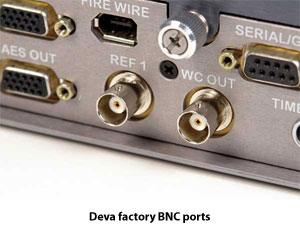
TA5 Pin-outs:
1 – Headphone Right
2 – Headphone Left
3 – Headphone Common
4 – Microphone Ground
5 – Microphone Audio (and 5V, if chosen)
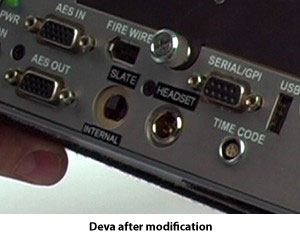
Compatible Headsets and Adapters
The shop at Remote Audio has accessories available to make full use of the headphone and slate mic modifications:
1) XLR3-F to TA5F adapter cable. This cable allows a standard XLR mic source to be used as an external slate mic.
2) Headset with TA-5F break-away connection and fan-out. Using the industry standard Sony MDR-7506, a talkback boom mic is mounted on the left ear. The original Sony coiled cable is replaced by a single, sturdy, cable (coiled or straight) with proper conductors for stereo headphones and the talkback mic. The new cable is terminated to a TA-5F, which can then be plugged directly into the new external slate mic input on the Deva recorder. To use this headset with standard connections, a fan-out adapter is available to convert the headset TA5F to a ¼-inch Sony-type stereo plug and 3-pin female XLR.
Why consider this modification?
The Slate Mic: While the Zaxcom recorders are marvelous machines of mind-boggling capability, those who use them often comment on the desperate need for an external slate mic input. It’s easy to understand how a manufacturer, while trying to achieve the ultimate balance of quality, cost, and utility, would devote few resources to “just a slate mic”. However, those who use these recorders on a daily basis know that it is not “just” a slate mic. They usually speak into and listen to that slate mic every time they press record! Additionally, the people who handle these recordings in postproduction must retrieve valuable information recorded through the slate mic, and this information should be easy to hear. The fact is that a distantly located internal slate mic can be an extremely frustrating and fatiguing limitation.
The problems with internal slate mics are multiple. One, they are usually electret omni-directional elements mounted in free air on the inside of the chassis. Since the operator’s mouth is usually several feet away, the surrounding ambience is often overwhelming and masks the voice. Hard disk recorders such as the Deva have an added problem in that their internal slate mic is mounted in the same chassis as the buzzing hard drive and wining DVD drive, masking the voice to the point of being unusable. Lastly, the Deva’s slate mic button is located directly beneath the slate mic, so it makes an annoying “thonk” when is released. This “thonk” is often confused by transfer technicians to be the clap sticks of the camera slate. The external slate mic input modification, used with a proper headset, solves all of these problems.
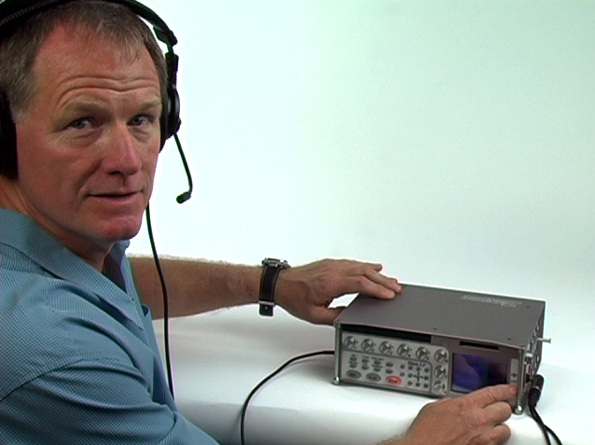
The Factory Headphone Jack
All stereo headphones that use a single cable have the cable attached to the left ear cup. The Deva’s original headphone jack is mounted on the right side (or, if you will, the wrong side), which means that the headphone cable is always crossing in front of the operator and in front of the controls. The Trew Audio modification allows the headset to be plugged into the left side, keeping the control panel unobstructed.
***All original Deva wiring is insulated and bundled within the unit allowing easy retrofit to the factory configuration if ever desired.***
Pricing
Deva 5.8, 16 and Fusion – US$350; Deva 4 & 5 – US$400. Call our US service department at 1-800-241-8994 to schedule the modification of your machine.
8 comments
Leave a reply Delete Message
You must be logged in to post a comment.


 US
US  Canada
Canada 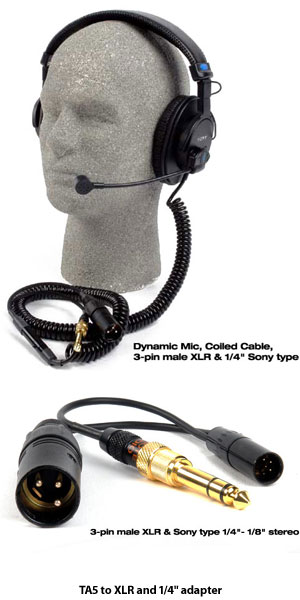
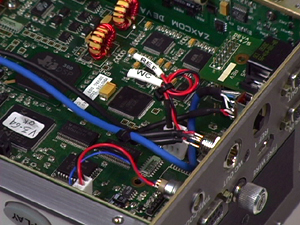
All headphones??? Sennheiser HD25 anyone? Maybe it should read, "all inferior sony headphones"
;)
The quote is: "All headphones that use a single cable...", which would not include the HD25. With the HD25, the cable is in the way whichever side you plug it in, but a headset version of the HD25 works nicely with the external slate mic input.
Glen Trew
Well, I'm totally confused! All 4 pairs of HD 25's I've got (not the HD25-SP, which are crap) have the (single) cable connected on the right side. Nearly every location soundo I know uses these and they match up perfectly with Sound Devices stuff which also has the headphone jack on the right. SQN and Wendt have always had theirs on the left which I've always found annoying! Is there another version perhaps I'm not aware of? Either way, I think the mod you're doing is a great idea. Happy tinkering!
looks great. wish I'd thought of it!
The HD25-SP (lower cost version, not usually the pro choice) has a cable hanging from each earpiece.
HMD25 (headset with mic) comes without a connector, so it can be wired so that the cable side is the right or the left of the stereo image. These headsets (like the HD25) are symmetrical so that they can be worn with the cable on the left or the right side. The microphone can be flipped to be either on the left side or right side of the user, without regard to a stereo image. However, all of the photos of the HMD25 I've seen from Sennheiser show these headsets in the cable-left position. The Sennheiser HD280 headphones come pre-wired with the cable on the left ear cup (these headphone are not symmetrical, and must be worn with the cable on the left side regardless of how the connector is wired).
The HD25, which is a popular pro headphone for film/video field monitoring, like the HMD25, it is a symmetrical design, so it can be worn with the cable hanging on either the left of the right side without affecting the fit or fidelity. It is unusual in that it comes from the factory so that the earpiece with the cable is wire to ring of the connector (right side). I'm sure there is an interesting history about why this is, but for those who want their HD25 headphones to be consistent with all of the other headphones typically used for film/video monitoring, it is a simple matter of reversing the two wires going to the tip and ring of the plug.
Other headphones/headsets seen in film/video production monitoring (Ultrasone, Beyer, Audio Technica, AKG) all have the cable-left standard.
All this is interesting, but not really a factor in Trew Audio's external slate mic mod for the Deva. The original 1/4" headphone connector is unchanged on the right side of the recorder, and still available for when it's more convenient, even when the external slate mic is used.
Pertaining to the external slate mic/headset modification for the Deva recorders, four points should be emphasized:
1) The external slate mic input can be used with any dynamic or electret condensor mic, even when using conventional headphones in the original 1/4" jack.
2) All commonly used professional headphones can be modified at Trew Audio to become "headsets" with a miniature booom microphone.
3) The Sennheiser HMD25 headset (dynamic or condenser, condenser recommended) can be used with the Trew Audio/Deva external slate mic modification simply by adding a TA5F connector. Our shop will be happy to install this connector.
4) The Sony MDR-7506 headset used in the video demonstration and shown in the photos is a stock item, and uses a miniature electret boom mic and mount manufactured by Remote Audio. Details of the microphone and options can be seen here: http://www.trewaudio.com/store/product.php?productid=1013&cat=109&page=1
-
Ed Novick said on August 18th, 2009 at 3:43 am:
> looks great. wish I’d thought of it!
Yes... Kudos to sound mixer extraordinaire Ed Novick (Dark Night) for the inspiration of this external slate mic/headset modification. Ed visited me on the set of "Hannah Montana, The Movie" last summer at the Santa Monica Pier and presented his idea that he was trying with his own Deva. During lighting setups we refined the concept and soon afterward installed it in Ed's Deva back at Trew Audio in Nashville.
Glen Trew
Glen Trew
How does one lock two Devas or another recorder together if the word clock input isnt active? or does that really matter?
thanks
> Scott Farr said on August 31st, 2009 at 2:06 pm:
>
> How does one lock two Devas or another recorder together if the word clock
> input isnt active? or does that really matter?
Hi Scott,
For the use that film/video recordists would usually use two or more recorders (such as when using a second recorder as a backup), it doesn't matter. When sample-accuracy sync is needed, the Deva can lock to an AES output of another recorder.
Glen Trew